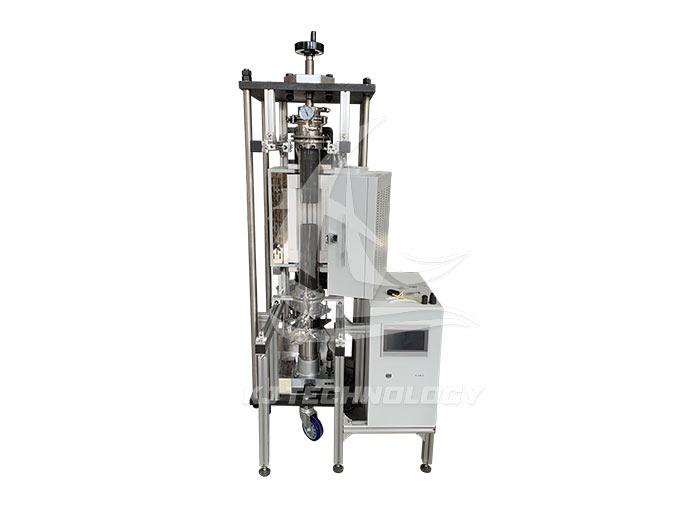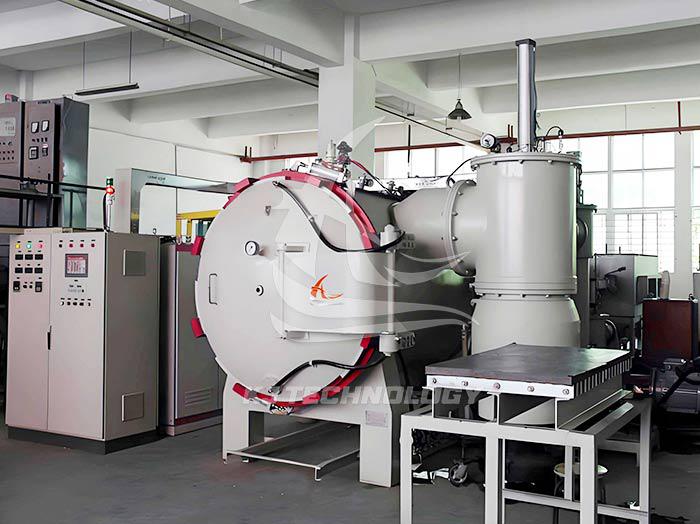Application fields of high vacuum furnace
 07-25-2025 Author: KJ technology
07-25-2025 Author: KJ technology
High vacuum furnaces play a key role in multiple fields due to their advantages of anaerobic environment, precise temperature control, and high cleanliness. Specific application areas are as follows:
1. Metal processing and heat treatment
Stainless steel and special alloy treatment
Bright annealing and solution treatment: High vacuum environment can prevent oxidation and decarburization of stainless steel products (such as plumbing equipment, medical devices, bearings, etc.). After treatment, the surface is smooth and free of impurities, with high production efficiency and low energy consumption.
Annealing of titanium alloys and soft magnetic alloys: Aerospace, nuclear power and other fields have extremely high requirements for material quality. Vacuum annealing can eliminate internal stress, improve material corrosion resistance and magnetic properties.
Annealing of high-speed steel and mold steel: Avoiding oxidation in a vacuum environment, improving material cutting performance and fatigue life.
Precision parts manufacturing
Vacuum quenching and tempering: Aircraft engine gears, cutting tools, etc. require high hardness and wear resistance. Vacuum quenching can avoid the influence of oxide layer on bonding strength, with a surface hardness of HRC60-65 and a deformation of less than 0.05mm.
Vacuum soldering: High precision soldering is required for integrated circuit lead frames, ceramic substrates, etc. The vacuum environment ensures that the defect rate of solder joints is less than 0.1%, and the bonding strength is significantly improved.
2. Semiconductor and Electronics Industry
Crystal growth and thin film deposition
Preparation of third-generation semiconductor materials: For example, the growth of silicon carbide (SiC) crystals requires a high temperature of 1600 ℃ or above and a vacuum environment to avoid carbon oxidation and promote silicon carbon element reaction, forming a structurally uniform single crystal.
Gallium Nitride (GaN) Doping Modification: By adjusting the gas atmosphere ratio, the electrical properties of wide bandgap materials can be optimized to improve the efficiency of semiconductor devices.
Chip Manufacturing and Packaging
Vacuum annealing: Silicon based devices (such as chips and LED epitaxial wafers) need to eliminate ion implantation damage and activate dopants. The vacuum environment can prevent surface oxidation of silicon and improve carrier mobility.
Vacuum diffusion annealing: Crystalline silicon solar cells form a uniform phosphorus doped layer in POCl3 atmosphere, increasing conversion efficiency to over 22%.
3. Ceramic and inorganic material processing
Ceramic sintering and densification
Vacuum sintering of nitride ceramics: For example, boron nitride (BN) and silicon nitride (Si ∝ N ₄) need to be sintered in a vacuum and N ₂ switching atmosphere to suppress decomposition and optimize density (>95%) and dielectric properties.
Ceramic substrate annealing: improves the crystallinity and thermal stability of ceramic materials to meet the requirements of electronic packaging.
Glass and Crystal Material Processing
Annealing of glass substrate: eliminates internal stress, improves optical performance and mechanical strength.
Crystal material growth: such as sapphire, yttrium aluminum garnet (YAG), etc. are grown in a vacuum environment to reduce defects and improve transparency.
4. Aerospace and Special Manufacturing
High temperature alloys and refractory metal treatment
Solution treatment of aircraft engine turbine blades: The vacuum environment controls the grain size of nickel based alloys at the micrometer level, increasing fatigue life by more than three times.
Melting of refractory metals such as tungsten, molybdenum, and tantalum: using electron beam or Joule heating to above 3000 ℃, removing impurities through volatilization (such as reducing C and O content to below 10ppm), and preparing high-purity single crystal ingots.
Post processing of additive manufacturing
Hot isostatic pressing (HIP) of metal 3D printed parts: high-pressure gas (100-200MPa) is added in a vacuum environment to eliminate internal pores, increasing the density from 95% to 99.5% and improving mechanical properties.
5. New Energy and Environmental Protection Industry
Recycling of lithium battery materials
Vacuum pyrolysis recovery: Retired lithium batteries are separated from electrode materials and separators in a vacuum environment of 500-800 ℃. The recovery rate of metals such as cobalt, nickel, and lithium is>95%, avoiding the combustion of electrolyte volatiles.
Preparation of Fuel Cell Catalysts
Proton exchange membrane fuel cell (PEMFC) catalyst reduction: Pt precursor is reduced to nanoparticles (particle size 2-5nm) in vacuum and H ₂ atmosphere to enhance catalyst activity and stability.
6. Research and Basic Research
Research on the Synthesis and Mechanism of New Materials
Preparation of nanomaterials: Vacuum environment (10 ⁻² -10 ⁻³ Pa) is used to prevent metal vapor oxidation and synthesize uniformly sized nano silver, nickel powder or Al ₂ O ∝, SiC ceramic powder.
Annealing of high-temperature superconducting materials: For example, YBCO superconducting tapes are annealed at 850 ℃ in an O ₂ atmosphere to form a c-axis oriented superconducting layer with a critical current density>1 × 10 ⁶ A/cm ².
Cultural Relic Protection and Special Analysis
Rust removal and stabilization of metal cultural relics: Bronze ware decomposes rust products (such as Cu ₂ (OH) ∝ Cl) in a vacuum environment of 100-200 ℃, avoiding damage to cultural relics caused by traditional chemical treatment.
Space environment simulation: Simulate the high vacuum and high-temperature radiation environment of the universe, test the long-term service performance of titanium alloys and high-temperature alloys.








